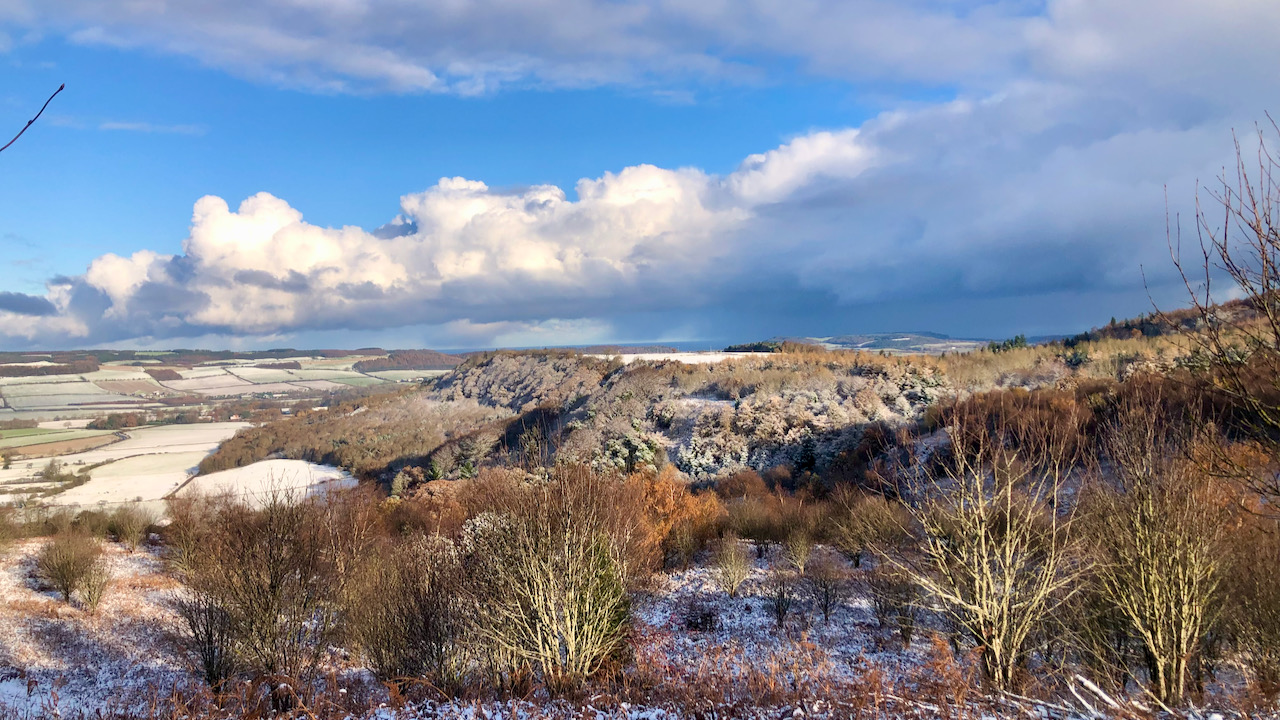On a rather agreeable day upon Roseberry Common, I was engaged in the rather laborious task of thinning out the encroaching Rowan and Birch trees. The day could have been described as pleasant, but only when the snow wasn’t falling, and the sun decided to grace us with its presence. That ominous flurry you see creeping in from the North Sea on the right? Well, give it half an hour or so, and it would arrive.
Now, right of centre in the photo is Bousdale Hill. Upon its plateau sits a farm, its buildings raised to stable Sir Joseph Pease’s thoroughbred hunters. An interesting tidbit for you – there was no water supply up there, so Sir Joseph had to implement a syphon system. Rumour has it the huge boiler used for water storage, had a prior life in the first steamship that ever graced the River Tees1Ref038 => Burns, Tom Scott. “The Walker’s Guide to the Cleveland Hills”. Page 43. Smith Settle. 1993..
As for Bousdale itself, that lies to the east, its dale status often overlooked as you stroll or cycle down the track through the forestry to Hutton Lowcross. The North Riding Quarter Sessions records a meeting house for dissenters, possibly Quakers, licensed there in 1691. This is despite its sparse population, but is a fact often quoted. However, Grace Dixon, the Guisborough historian, is sceptical, suggesting a clerical error in the records. According to her, the mention should have referred to Scugdale, on the Eston Hills side of Guisborough, as noted in the Quaker archives2Dixon, Grace. “Two Ancient Townships – Studies of Pinchinthorpe and Hutton Lowcross”. Page 58. ISBN 0 9507827 2 6 1991..
- 1Ref038 => Burns, Tom Scott. “The Walker’s Guide to the Cleveland Hills”. Page 43. Smith Settle. 1993.
- 2Dixon, Grace. “Two Ancient Townships – Studies of Pinchinthorpe and Hutton Lowcross”. Page 58. ISBN 0 9507827 2 6 1991.

Leave a Reply